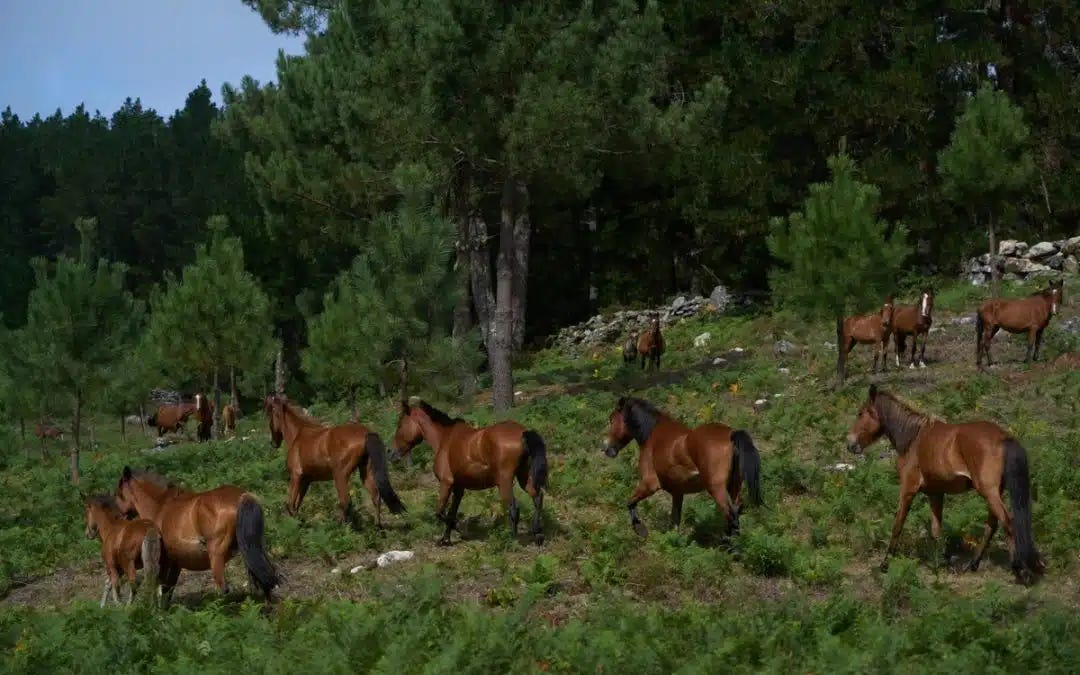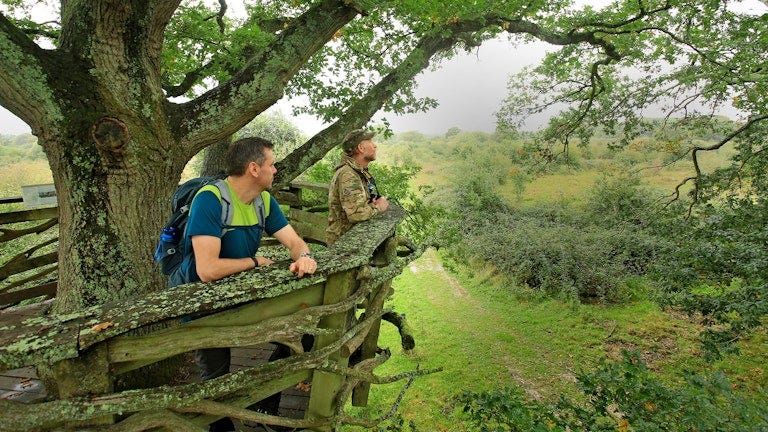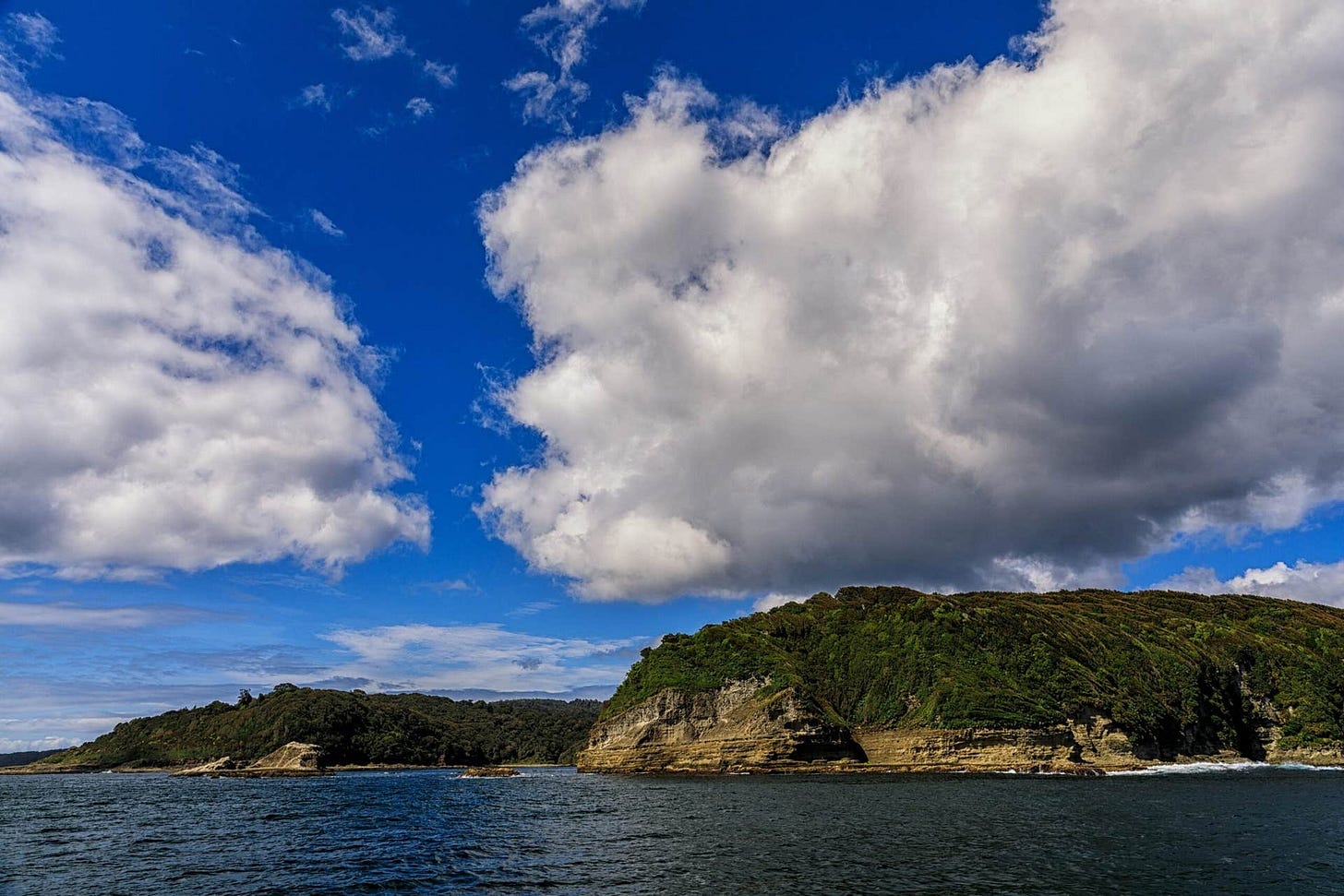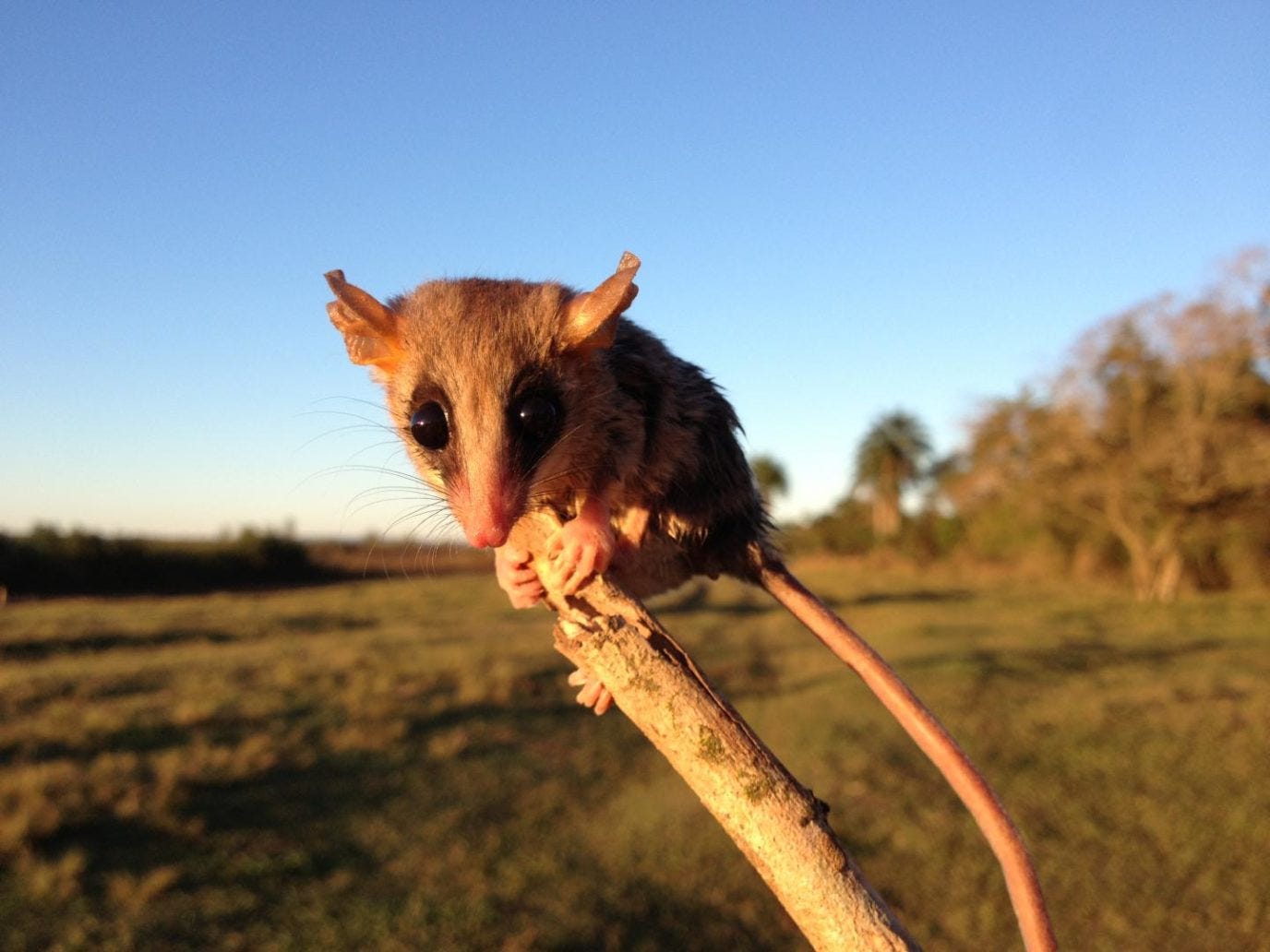Welcome to the latest edition of the Rewilder Weekly! 🦬🌳🐺🌞🌍
Back from a break in Italy, where I was able to observe a truly wonderful way of how a nature reserve, home to deer and boar and wolf, also offers hiking paths and beach opportunities to countless families. The people there use their common sense, there’s no fearmongering, there’s no panic - it’s an utterly beautiful lived example of coexistence and co-prosperity. 👉 Read more about it here
Now then, let’s get on with it - wishing you a good week.
Cheers,
👉 As a reminder: If you come across stories you’d like to see featured in an upcoming edition of the Rewilder Weekly, send them to me and I’ll gladly do what I can.
1) 1000 wild horses to mitigate against wildfires in Spain
A brilliant endeavor recounted by the Global Rewilding Alliance: Once upon a time lots of large herbivores grazed the lands in big herds. They naturally chewed up a great deal of vegetation as they roamed the wild. Nowadays there are few wild grazers, there are lots of easily flammable plants (especially eucalyptus!) and climate change brings ever more extreme temperatures and weather conditions. These are disasters waiting to happen - and they increasingly do happen, of course.
Natural solutions should always be our first go-to move and wild horses are perfect for the job. The Fundacion Montescola has been hard at work to ecologically restore the Galician village of Froxan. They removed highly flammable trees, work on restoring deciduous forests and rewetting peatlands and - as part of it all - in come Galician wild horses! The first 140 of them are already roaming the land - and the foundation hopes to bring that number up to 1000 - now we’re talking!
2) Mossy Earth revives ancient Icelandic wetland
The nature restoration projects keep coming - excellent! With this one, Mossy Earth is going to close three kilometers’ worth of drainage ditches. This will in turn restore over two hundred hectares of peatland (about three hundred soccer fields).
They explain: “The inland wetland of Mýrar in West Iceland is an ancient freshwater ecosystem of international importance. Its expansive freshwater habitats are resting places for migratory birds, some of whose global populations rely on them as breeding grounds. Within its many lakes and streams, species like the critically endangered eel feed and grow during epic migrations. In two key catchments of the Mýrar wetlands, we’re supporting the first wetland restoration project of its kind in Iceland for freshwater species. The goals? To unblock migratory paths, rewet drained peatlands and restore flows that connect all the way out to sea.”
👉 Go here to learn more about - and support - Mossy Earth
3) How rewilding supports war veterans
“When we restore nature, we restore ourselves,” says James Shooter, Communications Manager at Rewilding Europe - and with that quote comes an unusual story that concerns both the war and nature recovery in Ukraine. He writes, “It was a pleasure to see a glimmer of hope come to life from the team at Rewilding Ukraine. This is a story about an initiative to bring war veterans, and their families, some moments of peace and prosperity in the incredible waterscape of the Danube Delta.” Every war is an atrocity in itself - it causes innumerable needless deaths and wounds both physical and psychological.
Now some Ukrainian war veterans have the opportunity to bring unexpected light and hope to mitigate against their traumatic experiences, lasting anxieties and disorders. Launched last month, Rewilding Ukraine’s initiative “Nature for Veterans” brings groups of veterans into the rewilding landscape of the Danube Delta. One participant shared, “After everything we went through during the war, places like this are more than just a way to relax. We were able to pause, breathe deeply, and simply be together in peace and quiet. It was a chance to release some of the tension that has stayed with me since I was in combat. And for us as a couple, it was an opportunity to reconnect in nature, with no need to rush anywhere. The visit was incredibly valuable and much needed.”
4) Wild animals need wilderness, respect … and our distance
I’ve been trying to come to understand why I have an issue with videos and stories (though particularly videos) that show how caring human beings take a wild animal (often one that was hurt or abandoned) into their care. Or sometimes it is a wild animal that for some reason comes into the life of a person - forming a close friendship. But while it tugs at our heartstrings, humans shouldn’t domesticate wild animals. Nature needs them out there, and we need to learn about wilderness, not cuddles with foxes and polar bears.
In my latest article I take a closer look at such videos (and the famed/infamous Russian experiment of domesticating foxes) - and share a few examples that have, unsurprisingly, garnered many millions of views. Some of these human/wild animal stories are indeed heart-warming, others are everything from head-scratching to disasters waiting to happen. We need more nature. We need more recovered nature, wild nature. And this can only happen if more people are clear-eyed about nature, and accept and respect its true and utterly necessary wildness.
5) If you’ve never been to Knepp - come and explore virtually in the company of Nick Hallissey
Nick Hallissey has a passion for wild places and long walks - and he loves to write about his experiences. In “Live for the Outdoors” he writes about his visit to the Knepp Estate, where wildlife photographer David Plummer told him about the history of it all and acted as his Knepp guide for the day. Good article - if you can’t get to Knepp in person, this piece feels like you’re taking a virtual tour. Enjoy!
To give you a bit of a sense - at some point he writes, “A little later, we’re standing on a wooden observation balcony wrapped round a tree, one of six on the estate. David points out a dead tree out by itself across the next wide and jumbly meadow. It’s full of white storks, reintroduced via Warsaw Zoo. It could easily be a sight from the savannah.”
6) Where the Andes meet the Amazon
E. O. Wilson’s Half-Earth vision has long become a project and the E. O. Wilson Biodiversity Foundation shows, place after place after place, that Wilson’s vision of a sustainable future for all is well possible. The Half-Earth Project Map is a global effort that dives into the details of places everywhere and highlights the areas where “conservation actions can have the most significant impact on the species most needing protection by showcasing the research, education, and conservation activities inspiring the successful stewardship of these unique places.”
This time, they join ACCA (Asociacion para la Conservacion de la Cuenca Amazonica), a Peruvian organization focused on protecting the rich biodiversity of the Andes-Amazon transition zone, a region teeming with life from glass frogs to Andean bears. Protection and conservation actions are under way, as is research and training of future generations of conservationists. What an incredible place this region must be. From the article: “As a living laboratory, it offers vital insights into biodiversity, climate adaptation, and ecosystem connectivity … By weaving academic rigor, local insights, and global collaboration, the initiative not only trains a new generation of conservationists—it ensures that science and education work hand in hand to protect the region’s unparalleled natural heritage.”
7) Big industries wanted this island for its resources - well, they can’t have it
I wish big corporations would choose stakeholder capitalism and move away from their clearly extractive business models that continue to live the insane dream of infinite growth and ruin the planet’s natural ecosystems in the process. Well, sometimes - hooray! - they can’t have it their way. Re:wild reports that a group of foundations got together and bought the majority of Chile’s Guafo Island.
Here’s the plan for the island’s future: “A biodiverse Chilean Island that once attracted interest from the coal mining and timber harvesting industries is no longer on the market for destruction. Re:wild, the Jeff and Marieke Rothschild Foundation, the Wyss Foundation, and Art into Acres recently purchased the majority of the Guafo Island from a private owner, with WWF Chile and Cultiva subsequently joining to collaborate on future efforts. Re:wild aims to donate the property to Chile to convert it into a Chilean National Park, ensuring that it is conserved in perpetuity for future generations.”
8) Tropical dry forests are in big trouble
An excellent piece by Mongabay’s Liz Kimbrough about tropical dry forests. When we hear tropical and forest - we often immediately think of rain forests. But compared to rain forests, tropical dry forests tend to be easier to build roads, the weather tends to be more reasonable - and the diseases tend to be fewer. The article shares from the vast experiences of ecologist Dan Janzen (who was featured in Rewilder Weekly #56), who’s been documenting the biodiversity decline for the past fifty years.
Agriculture, urban development and climate change have wreaked havoc (and continue to wreak havoc) on these essential ecosystems. Hundreds of millions of people depend on fully functioning dry forest ecosystems, as do countless other species. Mongabay reports that, according to a 2022 study, “more than 71 million hectares of tropical dry forests were lost between 2000-2020 alone — an area twice the size of Germany — with remaining forests under immediate threat in rapidly expanding deforestation frontiers and from climate change, with some areas experiencing two additional months of drought compared to the 1960s.”
To conclude this week’s edition, wildlife artist Charlotte Williams shares her artwork depicting two African wild dogs. As so many other species, the African wild dog is under threat and is on the IUCN’s Red List (endangered). As a member of Artists for Conservation, Charlotte supports conservation groups around the world - and parts of her proceeds go toward conservation efforts.
If nature recovery is important to you …
… consider supporting the Rewilder Weekly. The rewilding movement is growing, and needs to grow a great deal more! Your subscription ensures that the Rewilder Weekly will always be around to reach, inspire and active more people around the world. Thanks for your support!
That’s it for this week’s edition. Eager for more rewilding insights?
connect with these organizations - sign up for newsletters and support them in any way you can;
join these events - conferences, online seminars, rewilding days and weeks to immerse yourself and learn from the experts;
read these books - a selection from Foreman to Macdonald, and from Tree to Daltun, Hetherington and Bowser;
listen to these podcasts - it’s inevitably inspiring when the likes of James Shooter, Ben Goldsmith and Brooke Mitchell talk to the pros in the field;
and check out these resources - explore the principles, ways of funding, research publications and personal ways to start rewilding.
And, of course, connect with and follow the many passionately engaged rewilders. Let’s keep growing the movement! 🦬🌳🐺🌞🌍




















